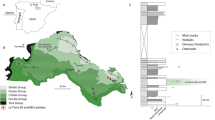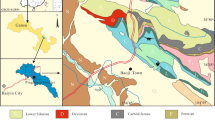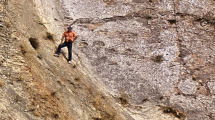Abstract
Ardley Quarry in Oxfordshire, UK, contains one of the most extensive dinosaur-trackway sites in the world, with individual trackways extending for up to 180 metres. We have discovered a unique dual-gauge trackway from a bipedal theropod dinosaur from the Middle Jurassic in this locality, which indicates that these large theropods were able to run and that they used different hindlimb postures for walking and running. Our findings have implications for the biomechanics and evolution of theropod locomotion.


Similar content being viewed by others
References
Cope, J. C. W. et al. Geol. Soc. Spec. Rep. 15 (1980).
Padian, K. & Olsen, P. E. Copeia 1984, 662–671 (1984).
Thulborn, R. A. Dinosaur Tracks (Chapman & Hall, London, 1990).
Alexander, R. M. Nature 261, 129–130 (1986).
Alexander, R. M. Zool. J. Linn. Soc. 83, 1–25 (1986).
Thulborn, R. A. Nature 292, 273–274 (1981).
Author information
Authors and Affiliations
Corresponding author
Rights and permissions
About this article
Cite this article
Day, J., Norman, D., Upchurch, P. et al. Dinosaur locomotion from a new trackway. Nature 415, 494–495 (2002). https://doi.org/10.1038/415494a
Issue Date:
DOI: https://doi.org/10.1038/415494a
- Springer Nature Limited
This article is cited by
-
Examining the accuracy of trackways for predicting gait selection and speed of locomotion
Frontiers in Zoology (2020)
-
The evolutionary continuum of limb function from early theropods to birds
Naturwissenschaften (2009)
-
Beyond the bones
Nature (2006)
-
Tyrannosaurus couldn't run
Nature (2002)





